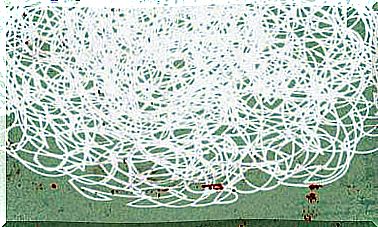4 Keys To Veganize Your Wardrobe
Have you decided to do without clothing and footwear made with materials of animal origin? Some recommendations will help you to do it in a sustainable, healthy and sensible way.

Ethical, aesthetic and sustainable reasons are not lacking to bet on vegan clothing and accessories and stop buying garments whose manufacture has used ingredients or materials of animal origin. But when it comes to veganizing your wardrobe, it is also important that you can do it in a way that respects the planet and without harming your health.
You have more and more options that combine all these two aspects, although not everything depends on the brands. There are also things that depend on you. Therefore, when equipping yourself, you should keep in mind some questions:
1. What to do with non-vegan clothing?
Having made the decision to stop buying non-vegan garments (wool, silk, leather, etc.), it remains to consider what to do with what has already been purchased. I recommend you:
- Do not throw half the closet out the window, but think about whether you are going to wear those clothes until the end of their useful life. Or if you are going to donate, sell, give away, exchange, etc.
- Due to the resources already used in its manufacture (materials, labor, water, energy, etc.), the most responsible and sustainable thing would be to use it until the end, or for other people to take advantage of it if they are in good condition.
- You can also opt for a transition period, using vegan clothes and others that are not. Although each process is different, doing it progressively, at the speed that your circumstances allow, helps you reflect.
- If the garments are unusable, it is preferable to deposit them in legal clothing containers, before they end up in the garbage can and, consequently, in the landfill. Why? Because, when they degrade, they emit more substances into the atmosphere and soil than plant residues, due to the finishes (chemical processes, dyes, bleaching, etc.) that the fabrics go through.
2. Consume little and well: less is more
From 2000 to 2015, the production of clothing has doubled in the world to exceed 100,000 million garments annually (1). Today the average citizen buys 60% more clothes than 15 years ago (2).
At the same time, their use has been reduced: more than 30% of the clothes that populate European wardrobes have not been used in at least one year (3).
Globally, customers lose a value of $460 billion each year by disposing of clothing that they could continue to wear (4). And it is estimated that some garments are thrown away after just seven or ten uses. Neither the balloon, nor our pockets, need us to constantly renew the contents of the wardrobe, but to buy what is really necessary, whether we are vegan or not.
So here are some ideas and resources to consume less and better:
- This vegan-friendy directory of Cuerpomente contains some proposals for sustainable brands and fashion stores suitable for vegans.
- Second hand, vintage, swapping clothes, etc. are also considered sustainable fashion . And it can be suitable for vegans and vegans, if only garments made from plant materials are chosen.
- Local artisans, firms or creators, with small productions or limited series (with much less impact than large multinationals) can also be considered aligned with sustainable fashion, by generating employment, productive and commercial fabric in the territories; in addition to maintaining, many times, techniques, ancestral knowledge and textile trades. Many artisans often work with local plant fibers, so they would be suitable for vegan consumption.
3. Prioritize materials of plant origin
Choose, if possible, plant fibers from sustainable cultivation. There are a variety of them: organic cotton, Tencel, organic linen. ..
The GOTS certificate is usually very common for organic fiber. Like Ecolabel, a seal that measures socio-environmental aspects.
The acrylic and synthetics derived from petroleum, natural resource but not renewable. If we extract all its reserves to the surface (along with the other fossil energies, such as gas and coal), life on earth will become impractical, as the scientific community warns.
In addition, oil is formed by the transformation of marine zooplankton (of animal origin) and phytoplankton (algae) deposited on the seabed, during our geological past, under layers of sediment. With which we could even question to what extent it is susceptible to being vegan …
The polyester, for example, is polietileneo terephthalate, ie PET, the same material of the plastic bottles. This type of fabric gives off microplastics in the washes that end up in the seas contaminating plant and animal species.
4. Recycled synthetic fibers
The synthetic acrylic fibers or recycled are considered sustainable fibers, since they do not employ more new materials for new clothes, but existing and reused. But keep in mind some recommendations:
- It is advisable that they have undergone chemical optimization (or neutralization) processes so as not to contain substances potentially harmful to health (or the environment) from the previous materials, or from added additives.
- The Oeko-Tex certificate ensures that the textile products that carry them have been analyzed for substances harmful to health.
- There are also several stamps that inform whether the garments are suitable for vegans such as PETA Approved Vegan, or V-Label.
- Going to specialized stores and consulting the doubts helps in the choice, in addition to being a great learning about the processes that the garments go through until they reach our hands.
Bibliography:
- Ellen McArthur Foundation report A New Textiles economy: redesigning fashion future (2017), p. 18.
- Greenpeace Germany Time out for fast fashion report (2016), p. 2.
- Report A Call to action for a circular fashion system, by Global Fashion Agenda (2017), page 4. You can consult it here.
- Calculation based on “Circular Fibers Initiative materials flow analysis”, by the Ellen McArthur Foundation, and the report “Apparel & Footwear 2016 Edition, volume sales trends 2005–2015”, by Euromonitor International.
- Morgan, LR and Birtwistle, G. (2009). An investigation of young fashion consumers’ disposal habits. International Journal of Consumer Studies, 33 (2), 190-198 .









